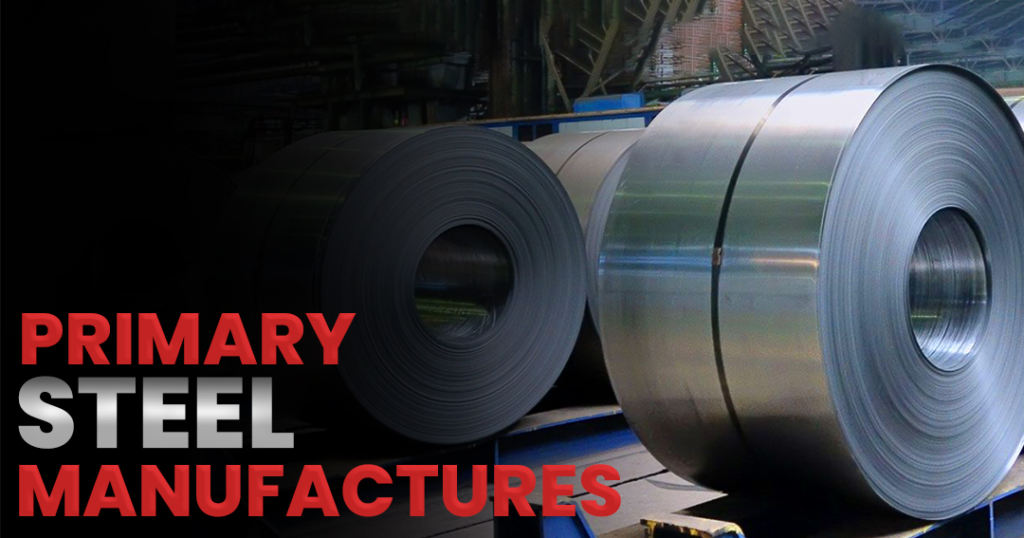Primary steel manufacturing facilities are the backbone of the steel industry, responsible for producing the raw steel that forms the foundation of countless products and infrastructure projects worldwide. While the steel industry is often associated with strength and durability, the inner workings of these facilities remain a mystery to many. In this exclusive glimpse behind closed doors, we’ll explore the inner workings of primary steel manufactures facilities, shedding light on the processes, technologies, and innovations that drive this essential industry forward.
Primary steel manufacturing facilities account for the majority of global steel production, with blast furnaces and basic oxygen furnaces being the most common methods used for steelmaking. According to the World Steel Association, China, India, and Japan are the top three producers of crude steel globally, with China alone accounting for over half of global steel production.
Raw Material Processing:
The steelmaking process begins with the processing of raw materials, including iron ore, coal, and limestone. At primary steel manufactures facilities, these raw materials undergo various processes, including crushing, screening, and blending, to create the optimal mix of ingredients for steel production. Once prepared, the raw materials are transported to the furnace area for the next stage of the process.
Ironmaking:
Ironmaking is the initial step in steel production, where iron ore is converted into molten iron through a series of chemical reactions in a blast furnace. Inside the blast furnace, hot air is blown through layers of iron ore, coke (a form of coal), and limestone, creating intense heat that melts the iron ore and forms liquid iron. This molten iron is then tapped from the bottom of the furnace and transferred to the steelmaking process.
Check out : The Role of Iron in Steel Manufacturing Industry
Steelmaking:
After the molten iron is produced in the blast furnace, it undergoes further refinement in the steelmaking process. One of the most common methods of steelmaking is the basic oxygen furnace (BOF) process, where the molten iron is combined with scrap steel and other alloying elements in a large vessel called a converter. Oxygen is then blown into the converter, causing chemical reactions that remove impurities and adjust the composition of the steel to meet specific quality standards.
Casting and Forming:
Once the steel has been refined to the desired composition, it is cast into semi-finished products such as slabs, blooms, or billets, depending on the intended use. These semi-finished products are then further processed through rolling mills, where they are shaped and formed into final products such as plates, sheets, bars, or coils. Advanced technologies such as continuous casting and hot rolling ensure precision and efficiency in the forming process.
Quality Control and Testing:
Quality control is a critical aspect of primary steel manufactures, ensuring that the finished products meet stringent quality standards and specifications. Throughout the production process, samples of steel are taken and subjected to rigorous testing and analysis to verify their mechanical properties, chemical composition, and dimensional accuracy. Advanced testing methods such as spectroscopy, ultrasonic testing, and tensile testing are employed to ensure the highest level of quality and reliability in the final products.
Environmental Considerations:
In recent years, primary steel manufactures have placed increasing emphasis on environmental sustainability and reducing their carbon footprint. Many facilities have implemented measures to minimize emissions of greenhouse gases, particulate matter, and other pollutants, such as installing state-of-the-art pollution control equipment and utilizing alternative energy sources. Additionally, efforts are underway to develop innovative technologies such as carbon capture and utilization (CCU) and hydrogen-based steelmaking to further reduce the environmental impact of steel production.
Safety Measures and Protocols:
Safety is paramount in primary steel manufacturing facilities due to the inherent risks associated with working with heavy machinery, high temperatures, and hazardous materials. These facilities implement stringent safety measures and protocols to protect workers and minimize the risk of accidents and injuries. Safety training programs, personal protective equipment (PPE), machine guarding, and emergency response procedures are standard practices in steel plants. Additionally, regular safety audits and inspections ensure compliance with safety regulations and identify areas for improvement to maintain a safe working environment for all employees.
Maintenance and Equipment Upkeep:
To ensure optimal performance and reliability, primary steel manufacturing facilities prioritize the maintenance and upkeep of their equipment and machinery. Preventive maintenance programs are implemented to identify and address potential issues before they escalate into costly breakdowns or production delays. Skilled maintenance technicians conduct routine inspections, lubrication, and repairs to keep equipment running smoothly and minimize downtime. Additionally, modernization initiatives and equipment upgrades are undertaken to improve efficiency, reduce energy consumption, and enhance overall productivity in steel plants.
Primary steel manufactures facilities are complex, high-tech operations that play a vital role in producing the steel needed for various industries and applications worldwide. From raw material processing and ironmaking to steelmaking, casting, and quality control, these facilities employ advanced technologies and rigorous processes to ensure the highest quality and reliability in the final products. As the steel industry continues to evolve and innovate, primary steel manufacturers remain at the forefront, driving progress and shaping the future of this essential industry.


